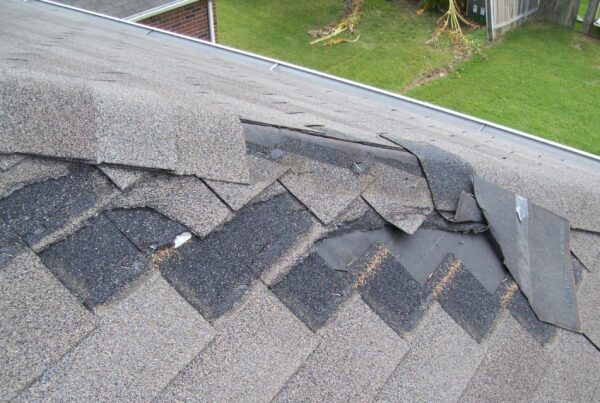This winter’s weather may have us thinking about building performance issues related to snow, but the fact is building performance issues are at the heart of what we do as building inspection engineers. Recent communications with one of our members about just how to take the measure of a building’s structural system, and alleged problems with it, causes me to think the subject deserves some additional consideration.
Many of our assignments for building inspection engineering services require that we touch on all aspects of a subject building, and arrive at some sound conclusions all the while doing so relatively quickly but in a manner that preserves the value and integrity of our findings. That can be hugely challenging.
The most preliminary consideration in preparing to assess structural features is how the service is to be structured and what is its purpose. Keep in mind that many times such services are part of a pre-purchase examination of a building. It is unlikely that such services can be work-scoped to be too much more than a kind of preliminary, walk through visual assessment. None the less we need to realize that our findings, however limited and disclaimed, are likely to play heavily in whether our client invests in the property or not. And I think we would all agree that structural issues are not only costly to correct if there are problems, but they are often difficult to detect due to concealment.
The most basic level of assessment is to identify the structural systems in place. Concrete, metals (commonly steel, iron, and aluminum), masonry, and wood are the most-seen structural system elements. In some cases only one of these will be the basic structural system, but in other cases some combination may be used. The inspection engineer has to use professional judgment to arrive at some conclusion regarding these systems emphasizing their adequacy (or inadequacy) and offering any recommendations.
That professional judgment when applied to concrete is likely helping the inspection engineer make decisions about compressive strength and cross section, coupled with an evaluation that considers the ability of the material to withstand fire effects and environmental forces. Remember that concrete is also assisted in its job by steel and other materials intended to help handle such stresses as tension. Finally, some evaluation of structural component connections has to take place.
Much the same occurs when evaluating steel or other metal structural systems. You are making your assessment in a manner that will allow reporting something about the strength and stiffness of the metal to carry applied loads. In many cases you will also encounter systems intended to protect the metal structural elements against fire effects and other environmental damage. Evaluating such aspects on a purely visual basis is possible with considerable training and experience, but it must be done all the while balancing risk and uncertainty with the unknown. As with many structural systems, individual members are only as good as their connections, so connective systems must be considered and evaluated as well in metal structural systems.
Masonry structural systems can be among the most arduous to evaluate adequately. Made up of individual manufactured units, masonry structural systems are bedded or bonded together by mortar or grout. Most of these systems also use reinforcement, ties, and anchors to achieve the design intent. Design intent in masonry often requires it to be used with other structural systems, and further assigns it the task of both carrying building loads and providing protection from the environment.
Problems with masonry are often traced to moisture and overload conditions, but remember that masonry structural systems are made up of many individualized components that make a detailed evaluation difficult. Not only does masonry have a primary role as a structural element, but it provides secondary benefits that involve architectural features and with those, provision of building envelope features. The success of the entire system is heavily dependent on mortar and grout.
Wood and engineered wood products also have similar roles in buildings. Clearly the primary role is to provide structural support and to achieve that end in a manner that resists environmental damage. Wood is subject to numerous vagaries related to its being a natural material. Hence the ability to do its job is, to a great degree, in the hands of how it grew in the first place. That can complicate evaluation.
Engineered products, while not as subject to naturally occurring vagaries, do include the variations occurring as a manufactured product with each manufacturer providing somewhat “proprietary” features and characteristics. To adequately assess engineered lumber products, knowing something about the specific product in question is tremendously helpful.
As with most structural systems, integrity is only as good as the individual member connections. Sawn lumber and tried and true framing methods may offer connections that are simpler to evaluate. But engineered lumber systems, along with increasing requirements for wind and seismic strength capabilities, can result in a plethora of manufacturer based systems that truly cannot be gauged for performance without some specific knowledge about the product being used.
As licensed engineers and architects, we are expected to have some knowledge of the implications of using specific structural systems. But how do we couple that knowledge with professional judgment to deliver meaningful findings to our clients? It is a difficult line to walk, but one that we need to deal with on a daily basis.
Standards can assist in helping us prepare methods to follow when we provide inspection engineering services. But some of those standards are extensive in themselves. One of the best for structural assessment of existing buildings comes from ASCE, but it is very lengthy and addresses only structural systems. We must typically report on virtually all building systems. Doing that is a challenge because it not only determines how adequately our clients are served, but how well we manage risk in our practices.
*This article had been posted in the Winter 2010 of The Examiner.


